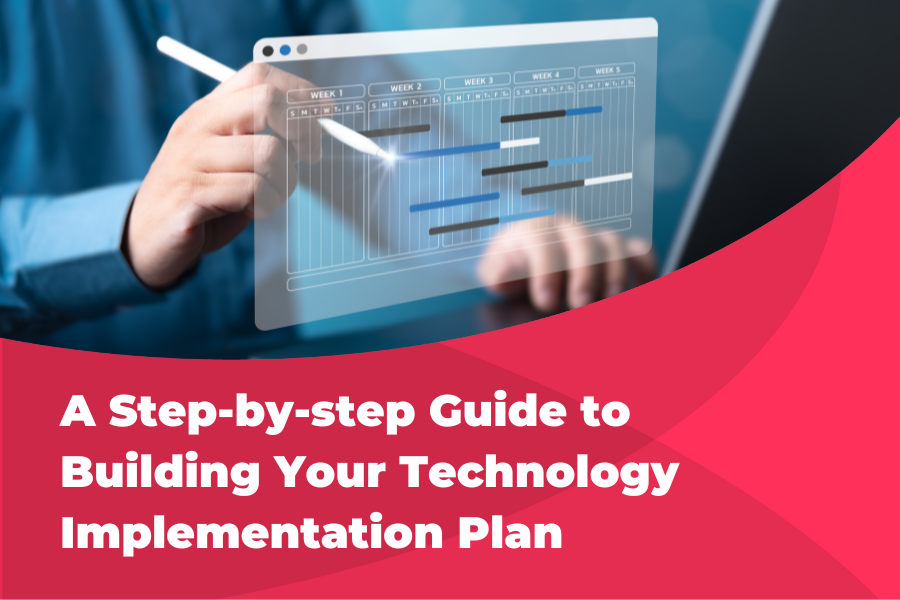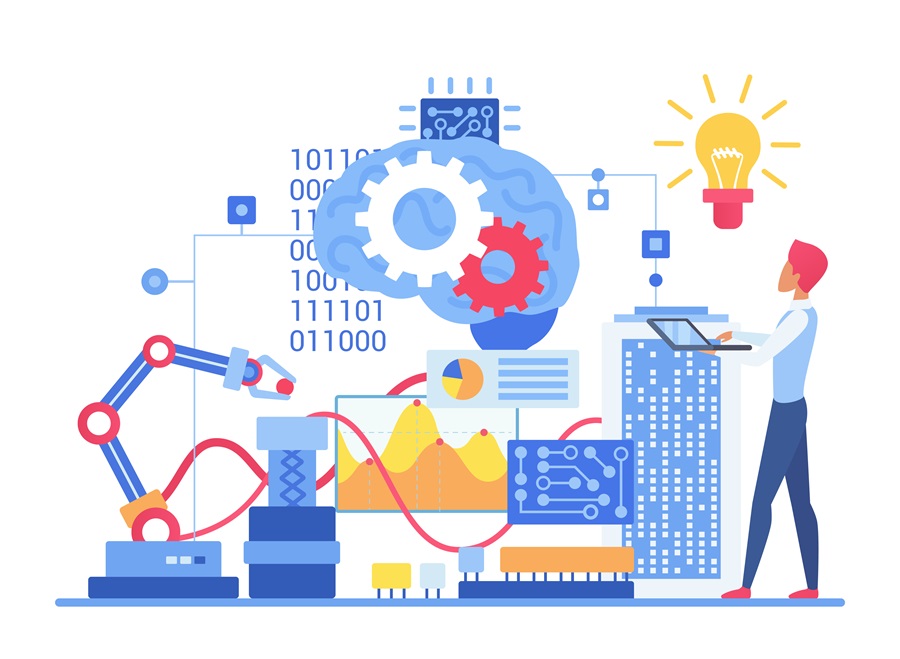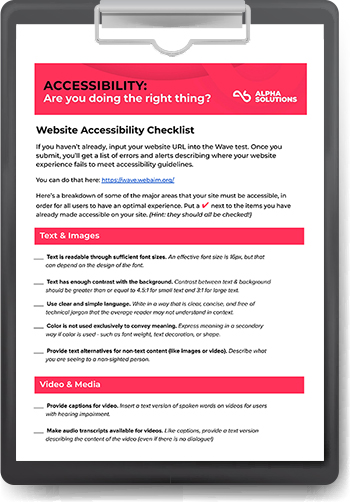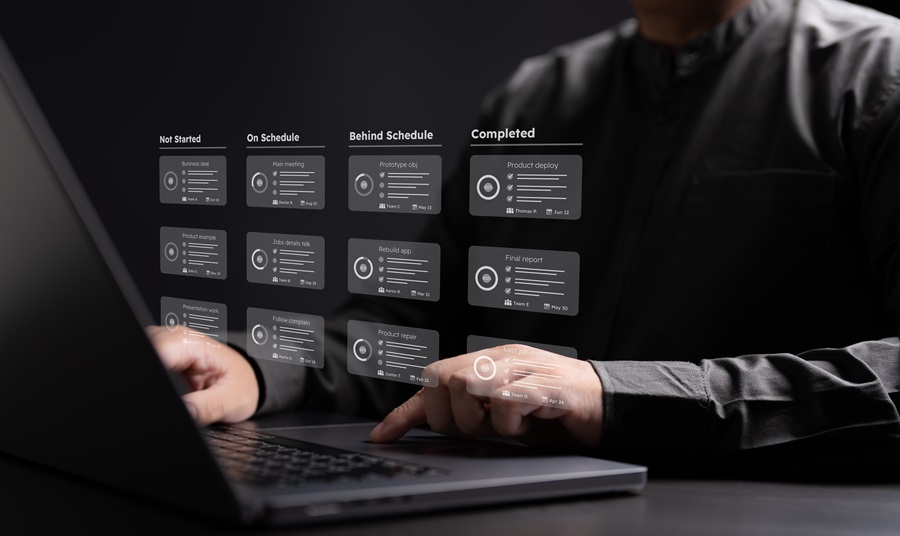In the world of enterprise business, stakes (and complexities) are high. When it comes to a new technology implementation plan, you need to make sure your implementation partner understands the unique challenges that large-scale organizations face.
When integrating new technologies and implementing new systems and software, the approach must be meticulously tailored to cater to the intricate dynamics of your specific enterprise.
We’re talking details, here.
As a leading digital tech consultancy, we are experts when it comes to guiding enterprises through the complexities of digital transformation in a way that ensures growth and competitive advantage.
This article outlines a step-by-step technology implementation plan, shedding light on the nuances of composable technology versus non-composable technology. Plus, how a holistic approach can facilitate seamless integration for enterprise businesses.
Understanding the Enterprise Ecosystem
The first step in your technology implementation plan is to understand the needs of your enterprise ecosystem.
Enterprise businesses most often operate with
-
multiple layers of management,
-
diverse departments, and
-
a broad spectrum of stakeholders.
A lot of moving pieces!
As you can imagine, this level of complexity requires a strategic approach that acknowledges and integrates all of these operational elements.
In our experience, the following are the most critical focus areas for enterprises implementing new systems:
Stakeholder Alignment
You will want to make sure all stakeholders are aligned, from C-level executives to department heads, ensuring that the technology implementation plan resonates across all levels of your organization.
Complex System Integration
Enterprises typically have established systems in place. This requires careful integration of new technologies so they work with existing systems, ensuring minimal disruption and maximum efficiency.
Scalability and Flexibility
Given the size and scope of enterprise businesses, we recommend that you emphasize scalable and flexible solutions. This approach allows for growth and adaptation as an enterprise evolves.
Data Security and Compliance
Enterprises are often subject to stringent data security and regulatory compliance requirements. Our technology implementation plans are designed to meet these high standards, and we suggest that your implementation partner take the same approach.
Customized Solutions for Diverse Needs
No two enterprises are the same, so your implementation partner should offer customized solutions that cater to your enterprise's specific needs, challenges, and goals.
Having taken all of this into consideration, we then move through the following seven-step technology implementation plan.
Step 1: Initial Assessment and Strategy Development
What are your business needs?
The first step in any new technology implementation plan should involve a thorough assessment of your enterprise's current digital landscape.
You’ll want your implementation partner to
-
study your business model,
-
understand your existing technology stack, and
-
clarify your long-term goals.
This assessment is crucial in aligning your new technology implementation plan with your business objectives.
Key activities in your initial assessment and strategy development:
-
Conduct workshops and interviews with key stakeholders
-
Analyze current technology infrastructure and capabilities
-
Identify gaps and potential areas for digital enhancement
|
How accessible is your website? Get our free accessibility checklist to guide your efforts for getting compliant and doing the right thing. Plus, receive real feedback from us to help you on your next steps. |
Step 2: Choosing Composable vs Non-Composable Technologies
What type of technology do you need?
As part of our digital technology consultancy, we make sure that our clients understand the importance of choosing between composable and non-composable technologies based on their enterprise's unique needs.
Spoiler alert:
It’s not just about making the choice between either composable or non-composable.
If you’re building a system from scratch, that may be the exception. But who is actually doing that these days?
Make the components of your system composable where it has value in these two areas-
-
It solves issues you have
-
It gives you a competitive advantage
This is the core of composable technology; it’s faster, less risky, and adds value quickly.
In essence, here’s the differences between the two:
Composable Technology
Composable technologies are modular and flexible. They can be easily integrated or replaced without affecting the entire system, making them ideal for businesses looking for agility and scalability in a fast-paced market.
➡️ Composable technology is ideal for businesses undergoing rapid transformation or those that need to quickly adjust to market changes.
Non-Composable Technology
Non-composable technologies are often more stable and rigid (monolithic) than composable technologies.
➡️ Non-composable technology is generally preferred for enterprises with unchanging processes where consistency is the key priority.
Your implementation partner may…
-
Evaluate your business's adaptability and future growth plans.
-
Recommend composable technologies for dynamic, fast-evolving enterprises.
-
Suggest non-composable solutions for businesses with fixed, well-established processes.
Choosing between composable and monolithic technology is an important piece of your technology implementation plan, and there are many factors that should play into the decision.
Remember though - it’s not either/or. Your solution does not have to be 100% composable vs non-composable.
READ MORE: A 5-Step Process for Shifting to a Composable Commerce Platform
Step 3: Crafting a Customized Technology Implementation Plan (aka Digital Transformation Roadmap)
What do you want to achieve?
Developing a new technology implementation plan (or digital transformation roadmap) means considering every facet of your business to ensure that your final plan is comprehensive, achievable, and aligned with the strategic goals of your enterprise.
Let’s look at an implementation plan example:
The following areas are key pieces to a well-organized plan that can be implemented cost-effectively.
Scope Definition: Clearly outline the project's scope, including the technologies to be implemented and the business areas they will impact.
Timeline and Milestones: Develop a realistic timeline with key milestones, ensuring timely progress and accountability.
Budgeting: Set a budget that reflects the project's scope and your enterprise's financial capacity.
Resource Allocation: Identify and allocate internal and external resources necessary for the project.
Risk Management Plan: Anticipate potential challenges and devise strategies to mitigate them.
Step 4: Employee Training and Change Management
What do you need for the transition?
One critical and often overlooked aspect of the software implementation process and integration is managing the human element.
Our consultancy provides comprehensive training and change management support to ensure our clients’ teams are well-equipped to adapt to the new technologies being integrated into the enterprise. Your implementation partner should offer the same service.
The following are some of the key activities for employee training and change management:
-
Develop customized training programs for different user groups.
-
Establish a change management team to guide employees through the transition.
-
Create communication plans to keep all stakeholders informed and engaged throughout the digital transformation process.
Step 5: Implementation and Continuous Monitoring
How will you stay on track?
With a solid plan in place, you’re ready to move towards the implementation phase.
Your implementation partner should be willing to become an extension of your enterprise to ensure the integration is smooth and disruption-free.
There are steps to be taken during and following implementation:
During Implementation
-
Monitor progress.
-
Make adjustments as necessary to stay on track.
-
Provide ongoing support to resolve any technical or operational issues.
Post-Implementation
-
Conduct regular reviews to ensure the technology aligns with your business goals.
-
Offer continuous monitoring and support services.
Step 6: Evaluation and Iterative Improvement
What will you need to measure?
Post-implementation, the focus should move to evaluating the impact of your new technologies.
Our goal is always to ensure that the new technology integration not only meets, but exceeds our clients’ expectations, driving growth and efficiency.
The steps we take for our evaluation include:
-
Measuring performance against pre-defined KPIs.
-
Gathering feedback from users and stakeholders.
-
Identifying areas for improvement and planning iterative enhancements.
How will you stay ahead?
The final step in your technology implementation plan is to prepare your enterprise for future technological advancements.
As your implementation partner, we would help you to establish a framework for scaling your new technologies and integrating future innovations seamlessly.
On an ongoing basis, as your digital consultancy partner, we would:
-
Conduct regular technology trend analyses.
-
Develop a scalable and adaptable IT architecture.
-
Foster a culture of continuous innovation and learning.
Conclusion
For enterprise businesses, integrating new technologies is not just an IT initiative; it's a strategic move that impacts the entire organization.
Your strategic implementation partner should demonstrate a commitment to ensuring your enterprise not only integrates new technologies effectively but also is poised to thrive in today’s ever-evolving digital landscape.
At Alpha Solutions, we take a holistic approach that considers the strategic business goals of your enterprise at each step of your digital transformation journey.
We recommend you follow these seven steps, and answer the following questions:
✅ Step 1: Initial Assessment and Strategy Development
What are your business needs?
✅ Step 2: Choosing Composable vs Non-Composable Technologies
What type of technology do you need?
✅ Step 3: Crafting a Customized Technology Implementation Plan
What do you want to achieve?
✅ Step 4: Employee Training and Change Management
What do you need for the transition?
✅ Step 5: Implementation and Continuous Monitoring
How will you stay on track?
✅ Step 6: Evaluation and Iterative Improvement
What will you need to measure?
✅ Step 7: Scaling and Future-Proofing
How will you stay ahead?
Going lightyears beyond mere technology integration, we focus on how your software implementation plan may strategically drive business growth, enhance operational efficiency, and give your enterprise business a competitive edge in your industry.
Let us lead your enterprise toward a strategic advantage for sustainable growth and success. Contact us for a chat today.












